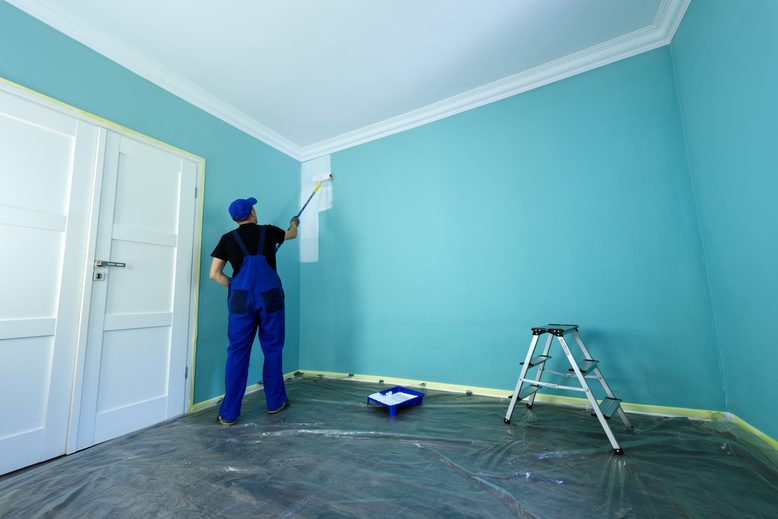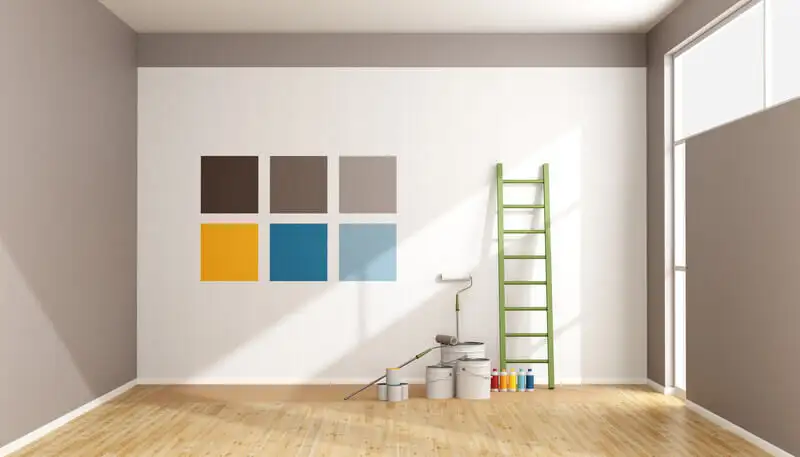Trusted Color Consultation in Lakewood for Personalized and Beautiful Color Choices
Trusted Color Consultation in Lakewood for Personalized and Beautiful Color Choices
Blog Article
Enhance Your Interior Decoration With Comprehensive Color Assessment
The assimilation of shade assessment into indoor layout provides a special chance to refine and boost the visual and emotional vibration of an area. By engaging with a skilled shade specialist, you can navigate the intricacies of color selection, making certain that your options not only enhance building features yet likewise resonate with individual style and psychological influence.
Benefits of Shade Examination

Furthermore, color examination help in taking full advantage of all-natural light and maximizing spatial assumption. Lighter colors can make an area show up even more large, while darker shades create an intimate setting. Cleveland Metro Painting Specialists. This calculated application of shade can dramatically influence the overall ambiance of any interior area
Furthermore, expert experts have a thorough understanding of current trends and timeless standards, ensuring that the chosen colors will certainly continue to be enticing with time. This insight can conserve customers from expensive redesigns in the future. Color appointment encourages clients by offering them with a clear vision and direction, cultivating self-confidence in their style choices and ultimately leading to an extra effective and enjoyable indoor style outcome.
Comprehending Shade Psychology
The importance of shade psychology in interior decoration can not be overstated, as it explores the psychological and psychological effects that various tones can evoke in people. Shades can influence state of mind, behavior, and also efficiency, making them a vital consideration in any style project.
For circumstances, warm shades such as red, orange, and yellow are typically related to power and heat. They can promote sensations of enjoyment and comfort, making them ideal for social rooms like living cooking areas or rooms. Alternatively, amazing shades like blue, eco-friendly, and purple often tend to evoke peace and tranquility, making them suitable for bedrooms or meditation locations.
Additionally, using neutral tones can develop a balanced atmosphere by permitting the bolder colors to stand apart without frustrating the senses. Understanding these mental influences enables designers to produce rooms that not just look aesthetically pleasing however additionally advertise emotional wellness.
Including shade psychology into interior style includes a thoughtful option of tones tailored to the intended function of each area, eventually boosting the total experience for its occupants. This awareness is important for accomplishing a useful and unified indoor environment.
The Color Wheel Explained
Understanding the relationships between shades is vital for efficient indoor style, and the shade wheel works as a useful tool in this process. The color wheel, developed by Isaac Newton in the 17th century, illustrates the spectrum of shades prepared in a round layout. It makes up main colors-- red, blue, and yellow-- that can not be created by mixing various other shades. Second shades, developed by integrating primaries, consist of environment-friendly, orange, and purple. Tertiary shades arise from mixing a primary and a secondary shade, causing colors such as red-orange and blue.
The shade wheel assists designers understand the relationships between shades, consisting of corresponding, comparable, and triadic schemes. Corresponding colors, located contrary each other on the wheel, develop dynamic contrasts that can energize a room. Analogous shades, located next to each other, give a harmonious and natural look. Triadic systems utilize 3 uniformly spaced shades, using balance and aesthetic interest.
Using the shade wheel in interior decoration not only improves visual appeal however additionally evokes certain feelings and environments, making it a crucial recommendation for shade assessment. Recognizing these relationships eventually encourages designers to create areas that are both useful and visually fascinating.
Choosing the Right Scheme
Often, choosing the ideal scheme is a decisive consider accomplishing an effective indoor design project. An appropriate color pattern can unify a space, improve its functions, and stimulate desired emotions. To begin, think about the function of the area. Different areas offer diverse functions and require combinations that show their desired usage; for instance, peaceful colors such as soft blues or environment-friendlies function well in rooms, advertising leisure.
Following, think about the natural light available. Light can dramatically alter just how shades appear, so it is important to evaluate the space at different times of the day. Additionally, take into consideration existing building elements and go right here home furnishings. An Resources unified combination ought to complement these attributes, producing a cohesive look throughout the room.
When choosing colors, utilize the 60-30-10 rule, which recommends that 60% of the area should be a leading color, 30% a second color, and 10% an accent shade. This ratio makes certain equilibrium and visual rate of interest (Cleveland Metro Painting Specialists). Lastly, sample shades on the walls prior to committing, as this enables you to see how the tones engage with one another and the general ambiance they develop in your interior decoration job.
Functioning With a Color Consultant

When working with a color specialist, the process usually starts with a preliminary examination. Throughout this meeting, you'll discuss your vision, preferences, and the existing elements in your space. The consultant will analyze your demands and website here might advise certain shade combinations that align with your goals.
After developing an instructions, the expert will certainly offer samples and visual help to assist you visualize the proposed color design. This step is essential, as colors can show up in different ways under differing lighting conditions.
In addition, a color specialist can guide you in picking corresponding furnishings, art work, and devices to harmonize with your picked combination. By working together closely, you can attain a refined aesthetic that boosts your interiors and develops a welcoming atmosphere. Inevitably, the know-how of a color consultant can substantially enhance the total effect of your design job.
Conclusion
In recap, extensive shade examination acts as a crucial tool for improving interior style. By leveraging expert understanding of color psychology and spatial dynamics, a customized color scheme can be developed to stimulate specific emotions and develop a harmonious setting. This strategic technique not only promotes a natural style narrative but likewise mitigates the danger of expensive redesigns. Ultimately, engaging with a shade specialist makes certain an educated and aesthetically pleasing outcome, boosting the total experience of the space.
By engaging with an experienced color expert, you can browse the intricacies of shade selection, guaranteeing that your options not only complement building functions however additionally reverberate with individual design and emotional influence. It consists of key shades-- red, blue, and yellow-- that can not be created by mixing other shades.The shade wheel aids developers realize the partnerships in between shades, consisting of corresponding, comparable, and triadic plans.When choosing colors, utilize the 60-30-10 guideline, which suggests that 60% of the space should be a dominant shade, 30% a second shade, and 10% an accent color. By leveraging professional knowledge of color psychology and spatial characteristics, a customized shade combination can be established to evoke specific feelings and produce a harmonious environment.
Report this page